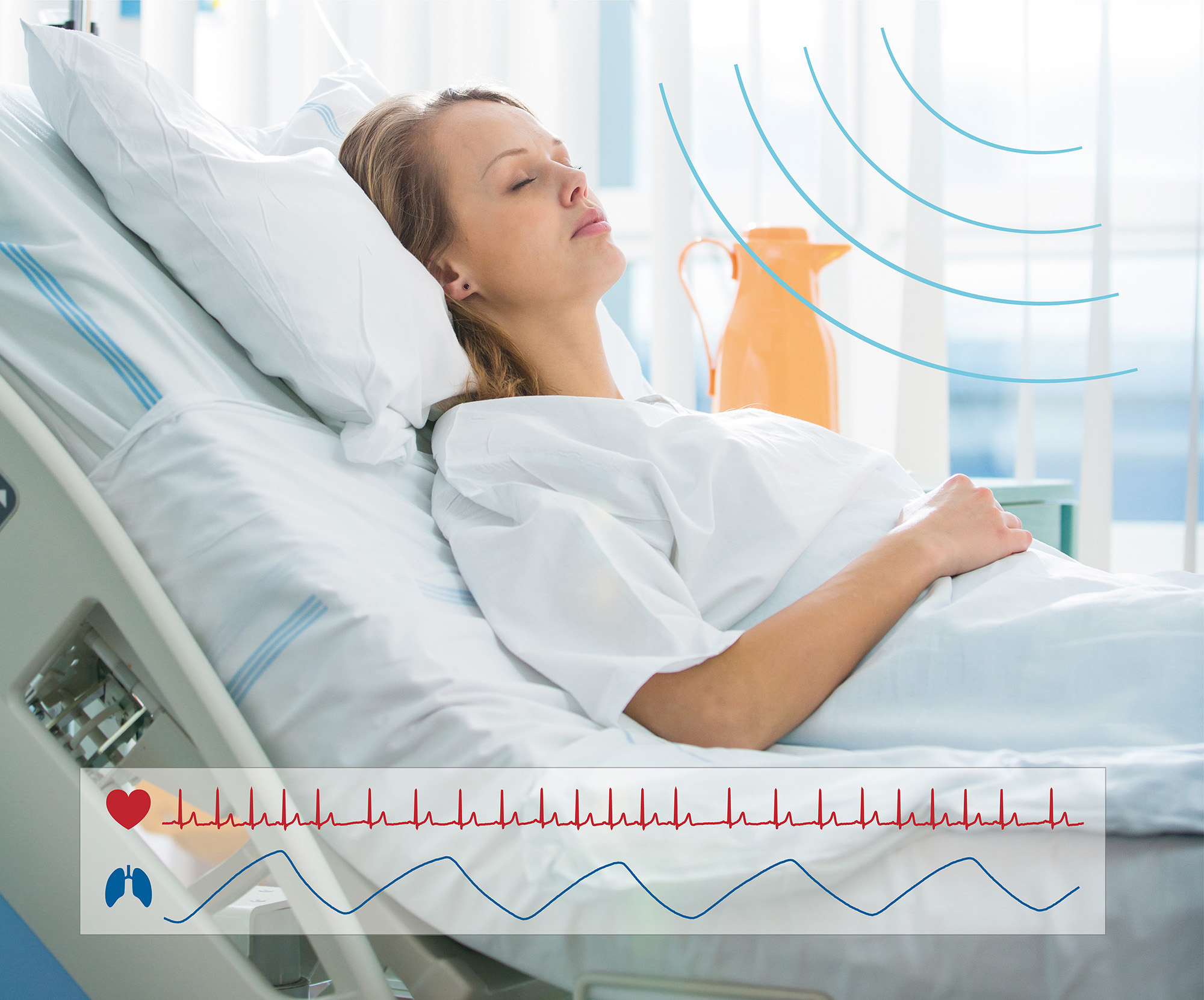Covid patients´condition always in view
Only a small proportion of covid patients are in intensive care. For all of them, however, the question arises: Is their condition deteriorating? A sensor system being developed by various Fraunhofer institutes in the M3-Infekt consortium project is designed to detect such a deterioration at an early stage – using, among other things, a MIMO radar that analyzes the breathing rate without contact.
Is the covid patient's condition deteriorating? This question arises not only in intensive care units, where they are monitored very closely, but also in other hospital wards and in home care. A modular, multi-modal and mobile sensor system called M3-Infekt will in the future be able to keep a constant eye on the condition of those infected and detect deterioration at an early stage. Fraunhofer FHR is part of a consortium consisting of 10 Fraunhofer institutes. In the future, the developed sensor system will not only monitor the health status of COVID-19 patients, but will also be used in those infected by other infectious diseases.
Different sensors work together
The sensor system consists of different sensor groups that complement each other. Wearable sensors that can be worn on the body constitute one of these groups. A textile-integrated sensor records ECG data, a sensor wristband records body temperature, pulse and blood oxygen saturation, and another textile sensor records the ventilation situation of the lungs. Also part of the project is energy harvesting, where concepts and solutions are being developed on how these wearable sensors can be powered by mechanical movement.
MIMO radar sensor measures breathing rate
Fraunhofer FHR is contributing a contactless MIMO radar sensor. This can be installed in the corner of a room, for example. From here, it determines the breathing frequencies of the people who are in the sensor's wide field of view. The chest movements caused by breathing can be detected by radar even through bed covers. The sensor design used here allows signals from different people to be isolated. If a patient's basic breathing rate changes, this can be an indication of a deteriorating condition. In addition to the radar sensor, there is another non-contact sensor: A hyperspectral image sensor from Fraunhofer IIS/ENAS. Its results can help factor out multiple reflections and the resulting ghost targets of the MIMO radar. The sensors should be built up to the point where they can be used for initial subject studies by mid-September 2021.
